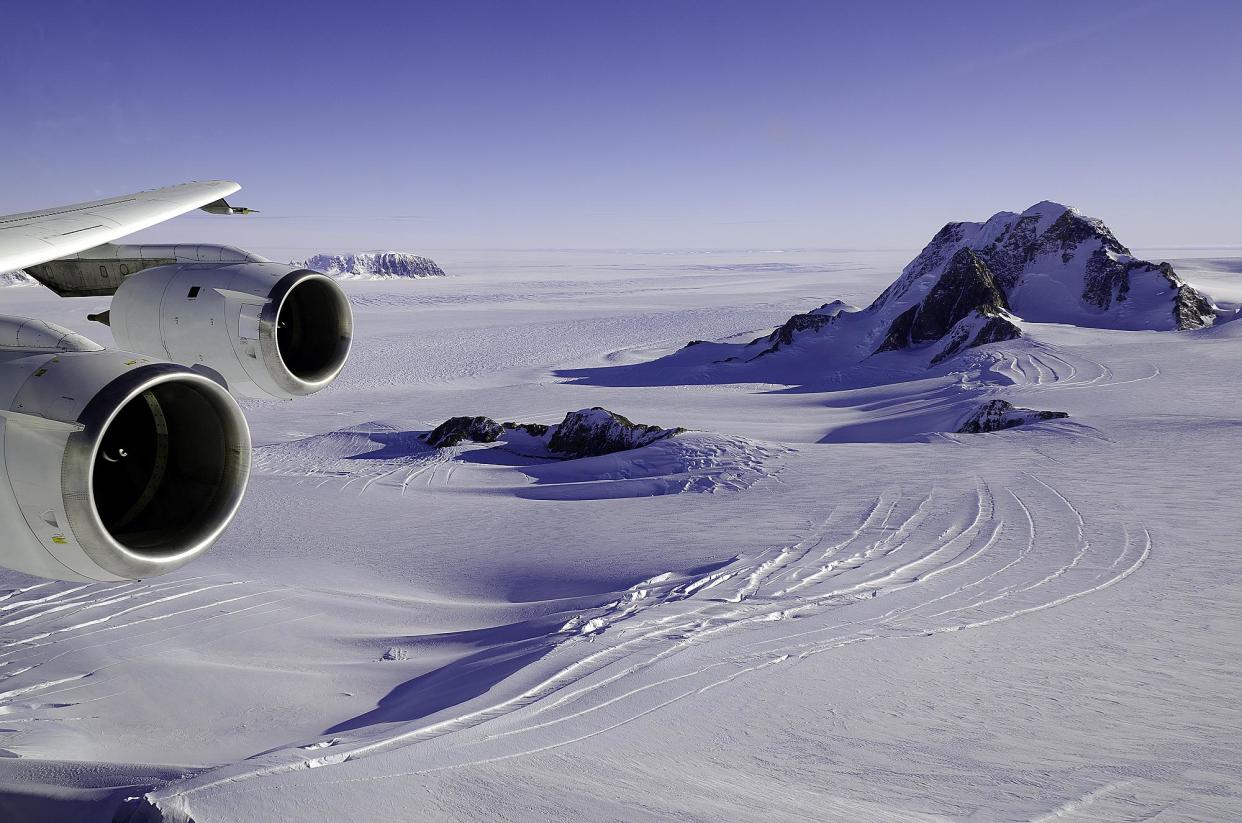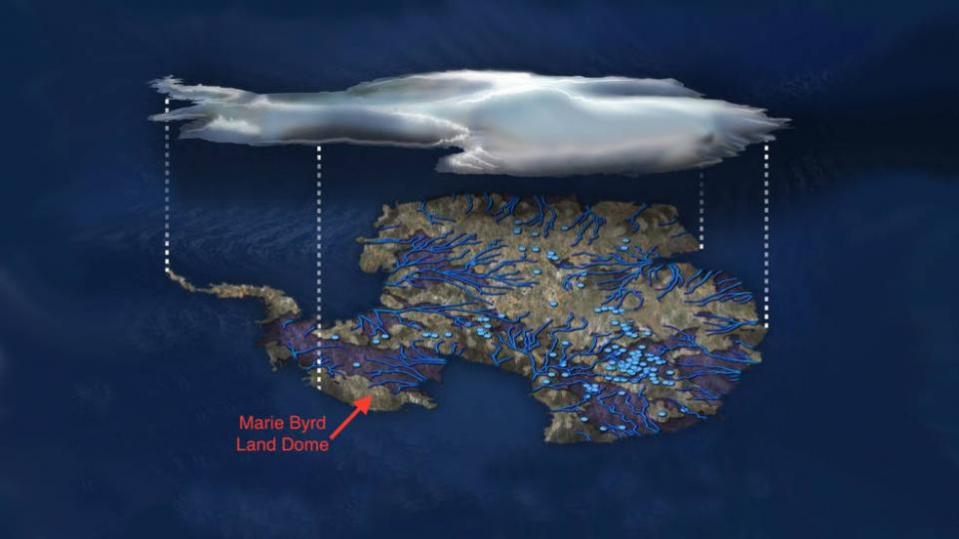Mysterious heat source beneath Antarctica could be melting ice, NASA believes

A large geothermal heat source beneath Antarctica could be melting the ice – and creating rivers and lakes beneath the ice.
It could have important knock-on effects during periods where there is already significant ice loss, the scientists warn.
The study hints that a geothermal heat source called a ‘mantle plume’ lies deep below Antarctica‘s Marie Byrd Land.
It might help explain why the ice sheet is so unstable today – and why it collapsed so rapidly in an earlier era of rapid climate change.

The idea was first suggested 30 years ago by a scientist at the University of Colorado Denver – and new seismic imaging has supported the idea.
Most popular on Yahoo News UK
‘Jealous’ lover accused of murder after ‘throwing acid over ex’
Clever sheep can actually recognise celebrities – including Barack Obama and Emma Watson
Qatar Airways plane diverted after woman discovers her husband’s affair mid-flight
Britain finally has its own answer to the ‘hot mugshot guy’
Friends who raced cars at twice the speed limit jailed for causing crash that killed young mum
Hélène Seroussi of NASA’s Jet Propulsion Laboratory said, ‘I thought it was crazy. I didn’t see how we could have that amount of heat and still have ice on top of it.”
With few direct measurements existing from under the ice, Seroussi and Erik Ivins of JPL concluded the best way to study the mantle plume idea was by numerical modeling.
Simiulations suggest that there could be a mantle plume under Antarctica, the researchers say – and it matches observations of the ice from satellites.
The Marie Byrd Land mantle plume formed 50 to 110 million years ago, long before the West Antarctic ice sheet came into existence, the researchers believe.
At the end of the last ice age around 11,000 years ago, the ice sheet went through a period of rapid, sustained ice loss when changes in global weather patterns and rising sea levels pushed warm water closer to the ice sheet, just as is happening today.
Seroussi and Ivins suggest the mantle plume could facilitate this kind of rapid loss.


